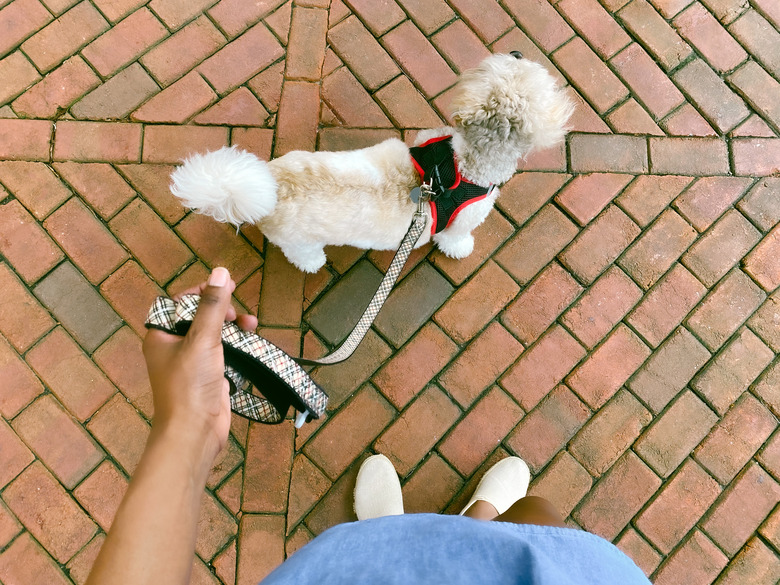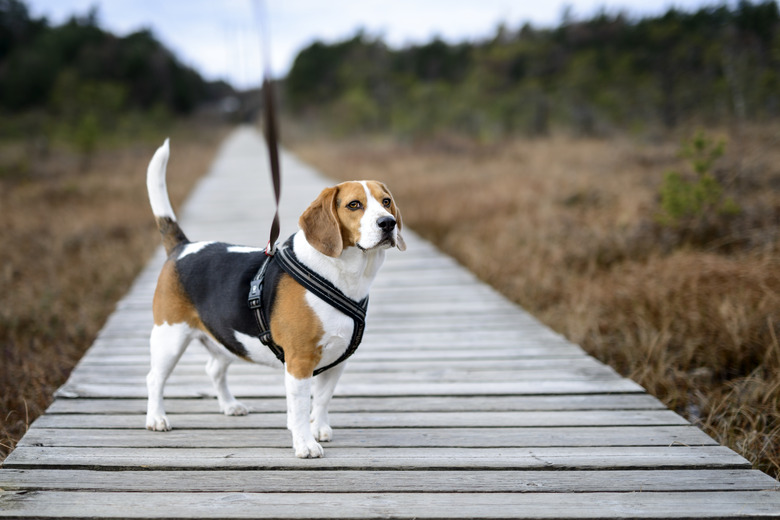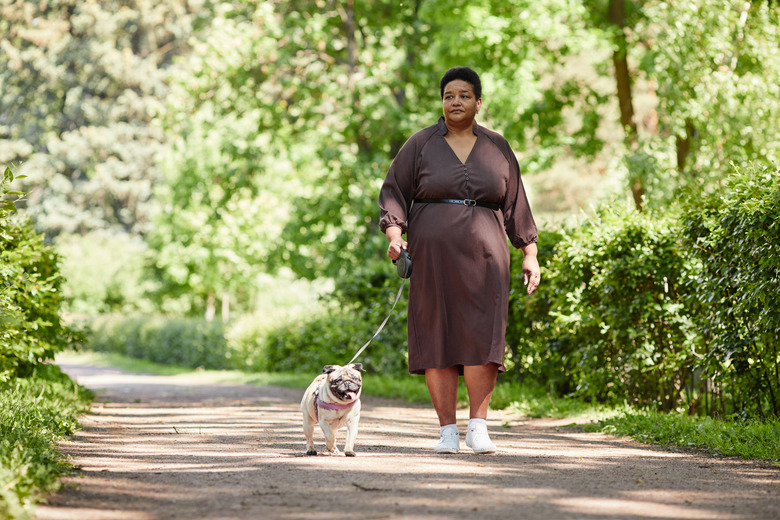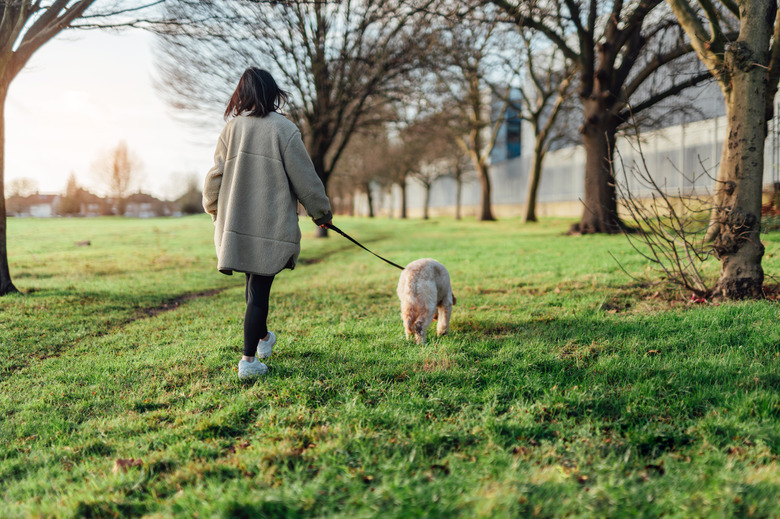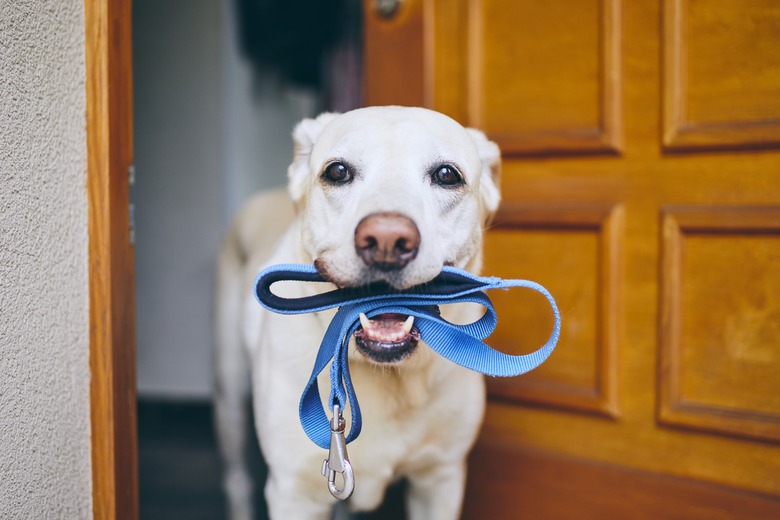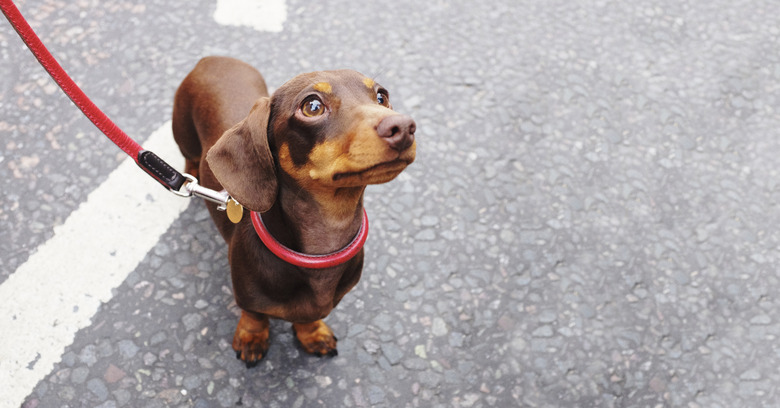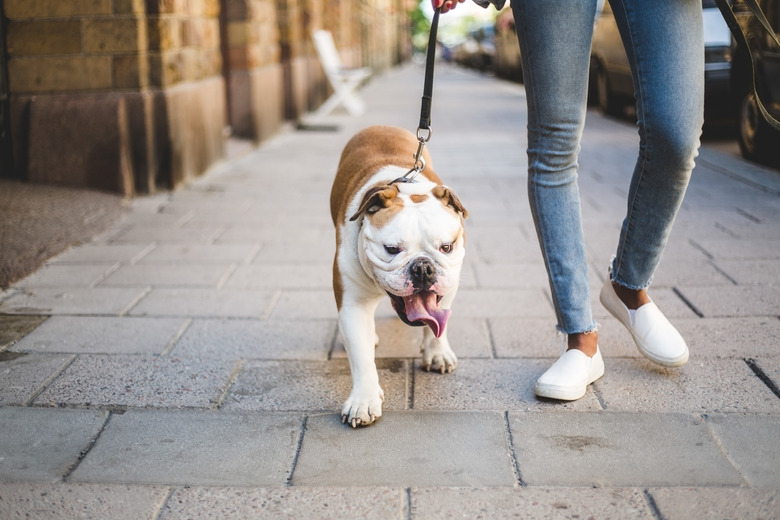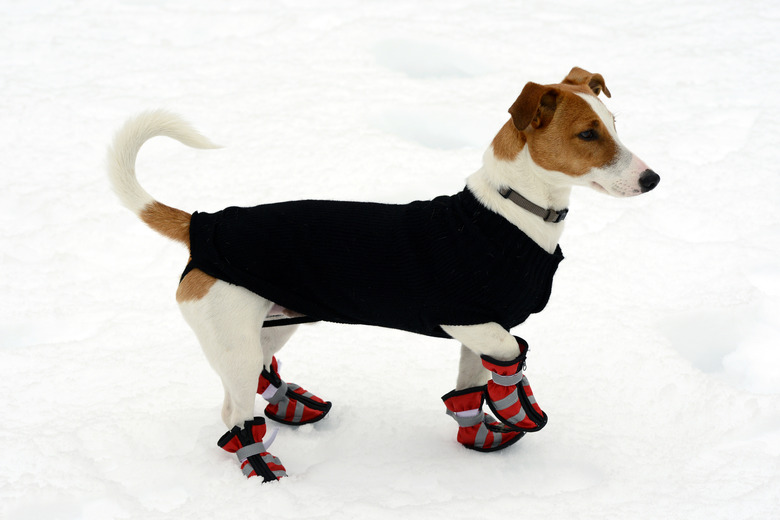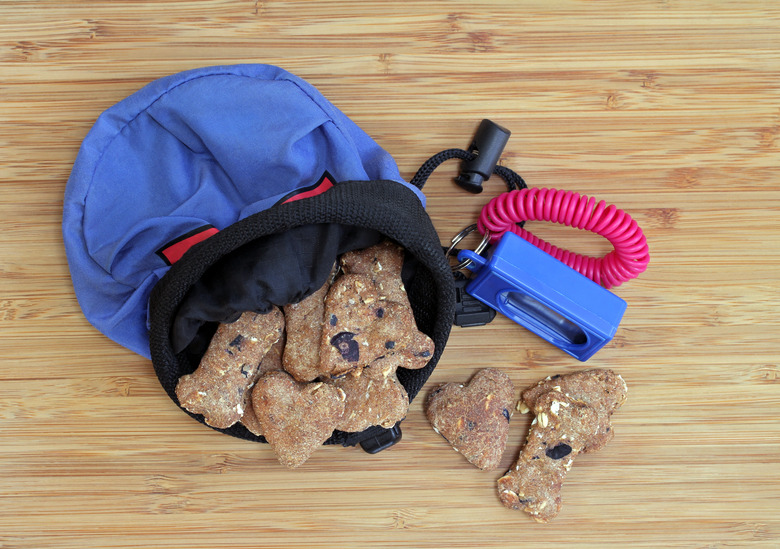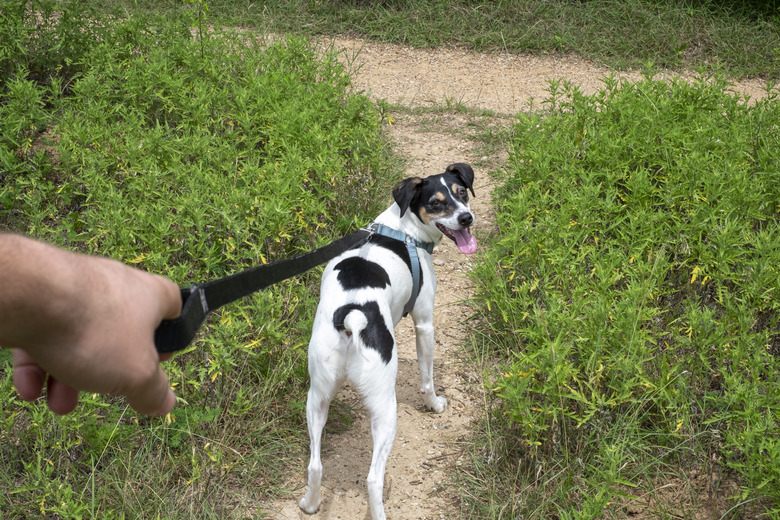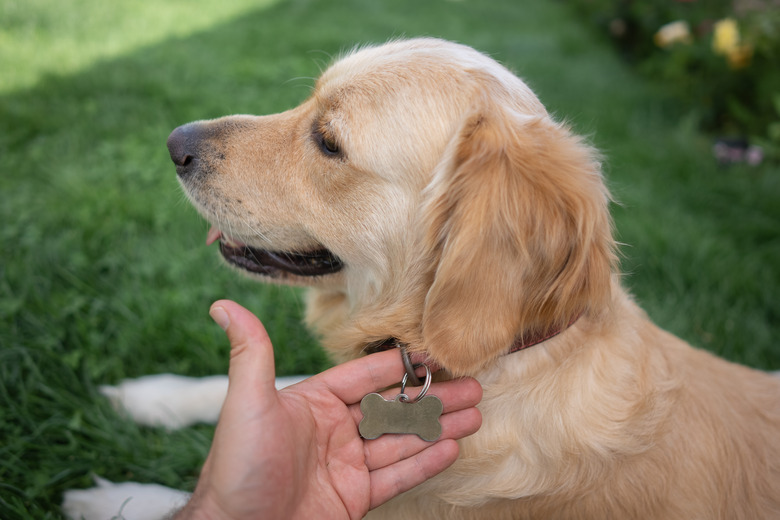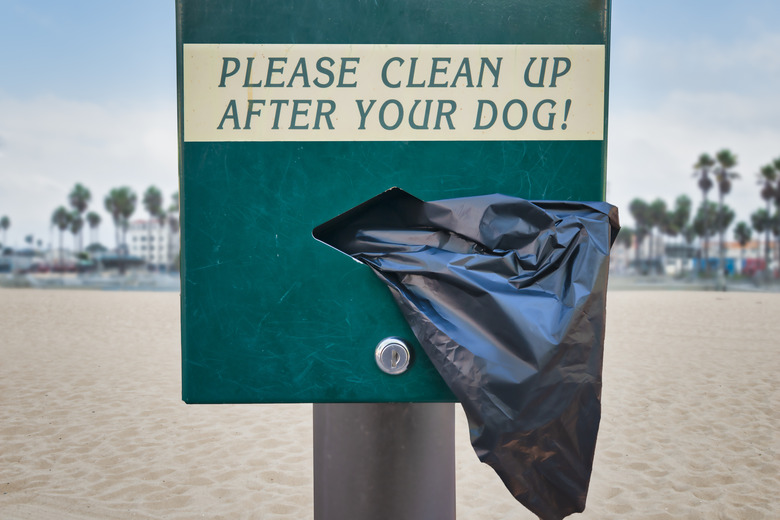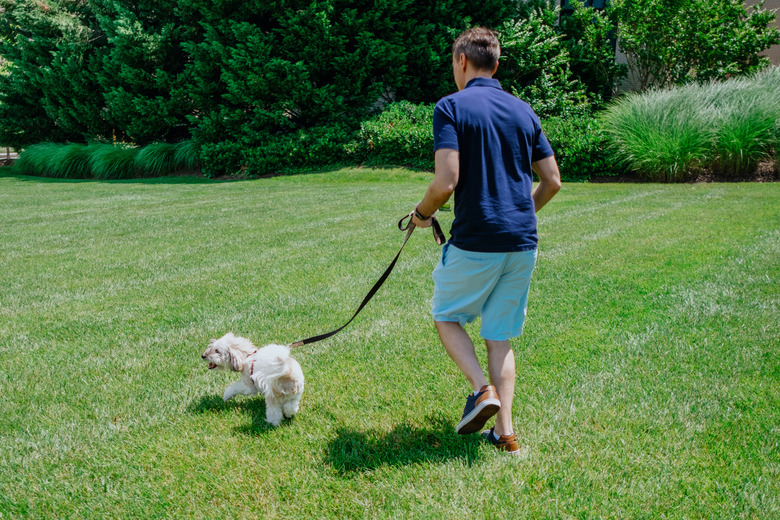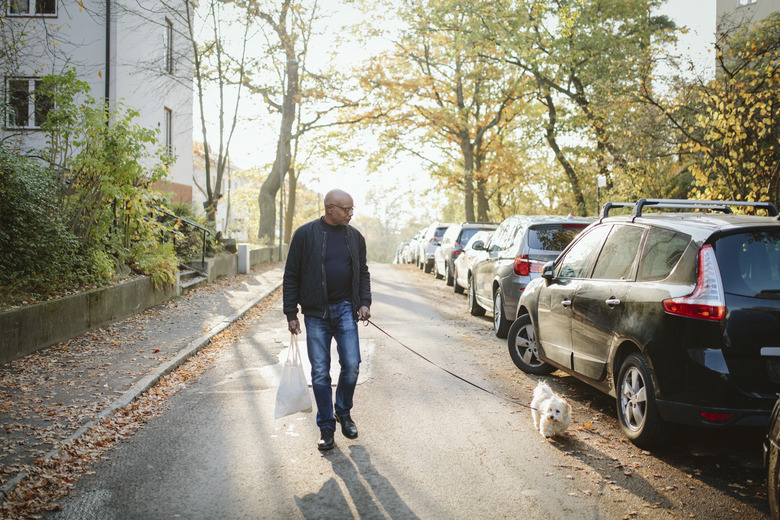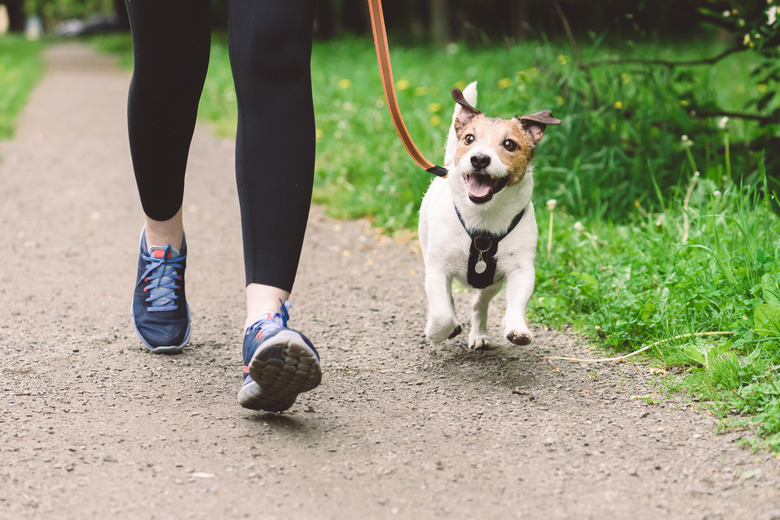7 Things You Should Never Do While Walking Your Dog (And What To Do Instead)
Do you have a dog who loves to walk? Many dogs enjoy their regular walks, and walking your dog can be a great source of exercise for dogs of all ages. Although walking dogs can be a lot of fun, there are preparations that should be taken to ensure the walk is safe and successful for both you and your dog. Here are the things you should do while walking your dog, and the things you should never do while walking your dog.
Don’t: let dogs pull their necks
Don't: let dogs pull their necks
If you have a dog who hasn't mastered loose leash walking, it's important to pick the right gear to prevent your dog from pulling on their neck. A dog pulling hard on their neck might cause injury to their trachea or put unnecessary strain on their body. To prevent injuries while pulling it's helpful to select the correct supportive gear for your dog to wear while walking. Depending on your dog, that might look like a dog collar, or more often a harness that takes the pulling pressure off your dog's neck while they walk.
Do: let your dog sniff and explore
Do: let your dog sniff and explore
While out on a walk with your dog make sure to give your dog the opportunity to sniff and explore. Dogs explore and understand the world best through their nose. Instead of hurrying your dog along on the walk, try to take the tie to let your dog sniff. The sniffing provides mental stimulation for your dog and can also help your dog to relax and decompress as they sniff. Give yourself extra time while walking to give time for your dog to sniff.
Don’t: let your dog approach other dogs or people
Don't: let your dog approach other dogs or people
While out walking with your dog don't let them approach other dogs (or people) unless you have explicitly been given permission to approach. Even if your dog likes other dogs and people, that doesn't mean that other dogs or people are comfortable being approached. Teaching your dog to focus on you instead of trying to approach other dogs and people is safer for everyone, and will help with dog training in the future as your dog will look to you instead of constnatly trying to greet others.
Don’t: use retractable leashes
Don't: use retractable leashes
When walking your dog, it's best not to use a retractable leash. Retractable leashes can be dangerous for both dogs and people. These leashes are prone to malfunctioning or allowing your dog to get into dangerous situations so it's best to avoid using them. If you're taking your dog walking in an open area and want to give your dog the chance to explore it's much safer to use a long-line style leash which can give your dog room to explore without the danger of a retractable leash snapping back.
Do: use appropriate length leashes
Do: use appropriate length leashes
Depending on where you're walking with your dog, your training goals, and your dog's temperament will dictate what type of leash you use. For most dogs, lightweight six-foot leash is generally best for a regular walk in the neighborhood or other busy area. If you're going to be walking somewhere more open like a quiet beach or field, a long-line leash is a great way to provide your dog with more freedom while keeping your dog safe and connected to you.
Don’t: let your dog off leash
Don't: let your dog off leash
Unless you are walking in an area where dogs are explicitly allowed off leash, or you are in an off-leash dog park or dog run, do not take your dog's leash off. Keeping your dog leashed to you is a way that you can make other dogs and people feel safer and more comfortable. A leash prevents your dog from approaching other people and dogs, chasing wildlife, or darting into traffic. Not everyone is comfortable with dogs and following leash laws helps to keep parks and other public spaces still dog-friendly.
Do: protect your dog’s paws
Do: protect your dog's paws
As you walk your dog, you'll need to protect their paws. Especially in cold weather with ice and deicer, you'll want your dog to wear booties to prevent foot irritation and cuts. In hot weather you'll want to put booties on your dog if you need to walk, especially on hot concrete which can burn your dog's paw pads. If your dog won't wear booties or you haven't yet taught your dog to be comfortable wearing boots, there are paw waxes and other paw protectors that can help.
Do: bring treats
Do: bring treats
Before heading out the door to walk, make sure to pack plenty of dog treats. While out walking, you can use treats to reward your dog for engaging with you, which will encourage your dog to stay close to you and not pull while walking. You can also use treats to help your dog cope with triggers like passing other dogs, walking near traffic, or avoiding foxtails.
Don’t: block the trail
Don't: block the trail
If you and your dog are hiking together, make sure that you and your dog share the trail with other people and dogs who are out hiking. When you are walking your dog on a sidewalk or trail and there is someone approaching, encourage your dog to get close to you. To do this, shorten your leash and treat your dog for staying near you to give others the opportunity to safely pass. Not everyone wants to be greeted by a dog and it's important to share public space with others.
Do: make sure your dog has identification
Do: make sure your dog has identification
Before heading out on a walk with your dog make sure they have a collar with an id tag. In case your dog accidentally gets lost updated identification tags can help get your dog returned to you.
It's also a good idea to have your dog microchipped. A microchip means that if your dog were to accidentally slip out of their collar, they would still have your contact information on them which can support your dog getting reunited with you sooner.
Don’t: leave poop behind
Don't: leave poop behind
When taking your dog out, make sure to bring poop bags with you and always scoop up after your dog. Picking up your dog's poop is not only the polite thing to do, but it also helps reduce the spread of disease. When out walking, be sure to pack enough poop bags, so you'll have enough even if your dog goes to the bathroom a couple of times. It's also nice to offer them to people who have forgotten theirs or need an extra.
Do: pick appropriate walks
Do: pick appropriate walks
As you plan for walks with your dog, make sure to pick walks that are appropriate for their age, temperament, and general personality. If the weather is especially hot or cold, be thoughtful about where you walk and how far you walk. If you are taking your dog hiking, be thoughtful about how strenuous the outing is going to be for your dog before you get on the trail.
If your dog doesn't have a lot of hiking experience, pick a less strenuous hike and build up their endurance for more challenging trails. Senior dogs, young dogs, some small dogs, and dogs with orthopedic conditions may need shorter walks. If you aren't sure what type of walk is most appropriate, talk with your dog's veterinarian about what is best for your dog.
Do: find fun places to walk
Do: find fun places to walk
Is your dog getting bored with your daily walks? Try to mix up where you walk to make the walking experience more fun and engaging for your dog. If you can, get your dog to a new environment, ideally somewhere in nature where your dog can sniff and explore. Just make sure to check ahead to ensure the location you're wanting to go is welcoming to dogs. If it's not possible to get out into nature with your dog, you can also just switch up your regular walk. Even just walking down a different street or walking in a different direction can make the walk more exciting and engaging for your dog.
Don’t: leave your dog alone while out
Don't: leave your dog alone while out
If you go out walking with your dog make sure that you'll be able to stay with them the whole time. In addition to the risk of dog theft, dogs left unattended can slip out of their leash or harness and get lost or be harassed by other animals or people walking by. If you are going to want to go into a store or a coffee shop, it's best to leave your dog at home.
The bottom line
The bottom line
Walks can be a great source of exercise and enrichment for dogs, but require some preparation to make them fun and safe for our dogs. Walks can help prevent boredom, and give our dogs access to thew world around us. By making sure that you have planned ahead and are ready with the right equipment, you can avoid some common mistakes dog guardians make, and have more fun walking with your dog.
